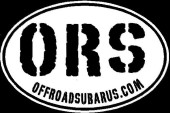Beachworm
Forum Member
- Joined
- Oct 16, 2017
- Messages
- 502
- Location
- Brisbane Australia
- Car Year
- 2010
- Car Model
- Forester X Luxury, sump guard, bigger AT tyres and 50mm Subieliftoz lift, breather extensions
- Transmission
- Auto
One of the interesting questions in the latter area concerns the main classification criterion. The most successful 4x4 guide books here, those of Charlie Wells, get it right, I think, by rating a trail in terms of its most difficult spot. If you have 10 miles of smooth sailing and 1 moderate spot, it is a moderate trail. And so on. This way people with less capable vehicles do not get nasty surprises.
I like the idea of a rating scale but I would like to see it an inclusive one. I know people who like to cruise unsealed (gravel) roads and do an occasional excursion through a creek and down a rocky track to a camp site or a secret fishing spot and I know others who like to challenge themselves and their vehicles with deep mud and water crossings, rocky hill climbs and so forth, with no particular destination in mind. The point is not to complete a trail or go somewhere in particular but simply to complete the climb or crossing etc.
I think it would be unfortunate to exclude the less adventurous by defining "off road" in a way that makes them feel as though they don't belong in the off road community, much the same way as Subaru owners are sometimes made to feel as though they don't belong in the 4X4 community.
I've mentioned in other posts that I am a member of the Subaru 4WD Club of Qld and we have a mix of members, ranging from those whose main interest is in restoring and maintaining what are fast becoming historic motor vehicles, to those who look forward to outings where the mud and dust is thick, the hills are steep and rocky and the water crossings make you stop and wonder whether it's worth the risk. Our outings are generally designed to appeal to most people so we have some country gravel roads, forestry trails and obscure, difficult bush tracks which are usually a side excursion from the main route so those concerned about scratching paintwork can take an easier way. The routes are graded easy, moderate and difficult by the group leader who runs a recce prior to the event. Easy is able to be done by unmodified Subaru vehicles. Moderate requires AT tyres, a lift and a recovery kit (contents specified). Difficult requires the same as moderate but with a dash of skill, courage and adventure added.
In Australia it is still possible to go cross country (I think Europeans call it overlanding) but not in many places other than private property. Australian 4X4 owners used to have a reputation for destroying vegetation by a process called "bush bashing" where the main tools to make a track through virgin bush were a big bull bar and a chainsaw. This is discouraged now, even within the 4X4 community where drivers are encouraged to stick to the track and minimise their footprint. Even spinning wheels is frowned upon by some as degrading the environment and contributing to erosion.
Beach driving is generally regarded as off road but most Australian beaches are now gazetted roads with posted speed limits and police speed monitoring. There are not many places close to civilisation where you can take off into the countryside of over the sand dunes and drive where nobody has been before. A trip to the Northern Territory is pretty much mandatory for anyone who sees this as the only way to go off roading.
The Subaru Forester, Outback and XV are classified here as off road vehicles but I am pretty certain that the people who put the Australian Design Rules together didn't have in mind that this would only refer to driving where there is no road at all.
I propose that we should try to agree on some kind of standard to rate off road driving, accepting that off road does not only apply to the trackless wilderness. Would it be generally accepted that the "easy, moderate and difficult" approach is suitable, perhaps with the addition of "extreme". If the trail goes from one point to another or in a circuit then the idea of classifying it by its most difficult part seems a safe way to proceed. When there is a network of tracks as often happens with forestry trails, this approach may be a little more difficult.
I'm keen to hear your responses. give me heaps if you like.


